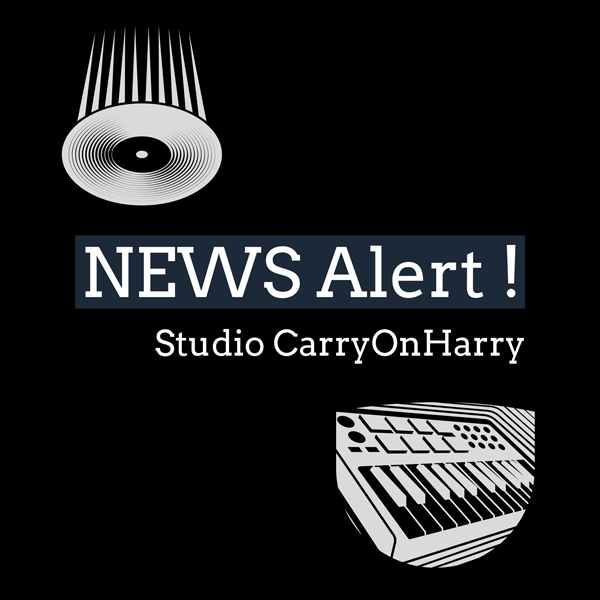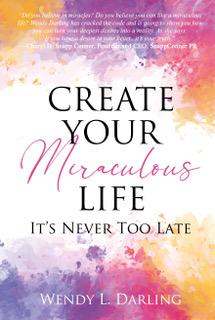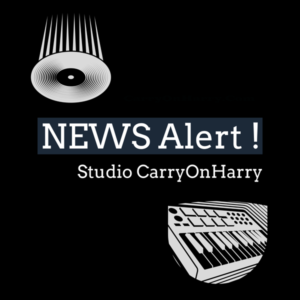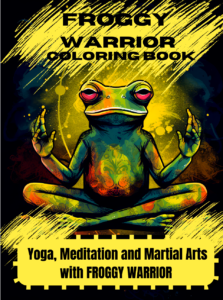Interviews
From Newbie to Pro: Expert Advice on Appearing in Interviews for Your Book Launch

If you’re a first-time author, the prospect of appearing in interviews for your book launch can be daunting. However, interviews are a crucial part of promoting your book and connecting with readers, so it’s important to approach them with confidence and preparation. In this article, we’ll share expert advice on how to go from a newbie to a pro when it comes to appearing in interviews for your book launch.
Step 1: Prepare Your Key Messages
The first step in appearing in interviews for your book launch is to prepare your key messages. These are the main points you want to communicate to your audience about your book, your writing process, and your overall message. Think about what sets your book apart from others in your genre, and what you want readers to take away from it.
To prepare your key messages, start by brainstorming a list of the most important points you want to get across. Then, prioritize these points based on their relevance to your target audience and their potential to generate interest and engagement. Finally, practice delivering these messages in a clear, concise, and compelling way.
Step 2: Know Your Audience
The second step in appearing in interviews for your book launch is to know your audience. This includes the interviewer and the readers or viewers who will be tuning in to the interview. Take the time to research the interviewer and their style, so you know what to expect and can tailor your messages accordingly.
It’s also important to understand your target audience, and what they’re looking for in a book. Are they looking for escapism, education, or inspiration? What themes or topics are most important to them? By understanding your audience, you can better tailor your messages and connect with them on a deeper level.
Step 3: Practice, Practice, Practice
The third step in appearing in interviews for your book launch is to practice, practice, practice. The more you practice delivering your key messages, the more confident and polished you will appear in interviews. Practice in front of a mirror, record yourself on video, or rehearse with a friend or family member.
As you practice, pay attention to your body language, tone of voice, and overall demeanor. Make sure you’re conveying confidence, enthusiasm, and authenticity. It’s also important to listen to feedback and adjust your approach as needed. Remember that practice makes perfect, and the more you prepare, the better you will perform.
Step 4: Anticipate Tough Questions
The fourth step in appearing in interviews for your book launch is to anticipate tough questions. While you can’t predict every question that will come up in an interview, there are certain topics or themes that are likely to be addressed. These may include controversial topics, personal details about your life, or critical reviews of your book.
To anticipate tough questions, brainstorm a list of potential questions that might come up in the interview. Then, prepare responses that are thoughtful, respectful, and authentic. Practice delivering these responses in a calm and confident manner, so you’re prepared for any curveballs that might come your way.
Step 5: Be Yourself
The final step in appearing in interviews for your book launch is to be yourself. While it’s important to be prepared and professional, it’s equally important to let your personality shine through. Readers want to connect with authors on a personal level, so it’s important to be relatable and authentic.
To be yourself in interviews, focus on your strengths and what makes you unique. Don’t be afraid to share personal anecdotes or stories that illustrate your point. Remember that interviews are an opportunity to connect with readers and share your passion for writing, so have fun and enjoy the experience.
In conclusion, appearing in interviews for your book launch can be a nerve-wracking experience, but with the right preparation and mindset, it can also be a rewarding and fulfilling experience. By preparing your key messages, knowing your audience, practicing, anticipating tough questions, and being yourself, you can go from a newbie to a pro when it comes to appearing in interviews for your book launch. Remember that interviews are an opportunity to showcase your book and connect with readers, so approach them with confidence and enthusiasm. With these tips in mind, you’re well on your way to a successful book launch and a bright future as an author.
Interviews
podcasting microphone

Understanding Podcasting Microphones: An In-Depth Guide for Beginners and Professionals
Types of Podcasting Microphones
Dynamic Microphones
Dynamic microphones are the most popular choice for podcasting. They convert sound into electrical signals using a diaphragm, coil, and magnet. These microphones are robust, can handle high sound pressure levels, and require less gain than other types. This makes them excellent for capturing voices in less-than-ideal acoustic environments. The Shure SM7B and the Electro-Voice RE20 are industry standards among podcasters.
Condenser Microphones
Condenser microphones are sensitive and tend to capture a wider frequency range compared to dynamic microphones. They require phantom power to operate and are ideal for capturing subtle vocal nuances, making them great for voice work in studios. Notable condenser microphones include the Audio-Technica AT2020 and the Rode NT1-A, both widely admired for their clarity and depth.
Lavalier Microphones
Lavalier microphones, or lapel mics, are small, clip-on devices ideal for interviews and on-the-go recording. They ensure hands-free operations and are particularly useful for video podcasts. Wireless options add flexibility, allowing hosts to move freely during recordings. Popular choices include the Rode SmartLav+ and the Sennheiser ME 2-II.
USB Microphones
For those looking for simplicity and convenience, USB microphones are perfect. They connect directly to a computer without the need for additional equipment. While they may not deliver the same quality as XLR microphones, models like the Blue Yeti and the Audio-Technica ATR2100x-USB are excellent for beginners and home podcasters.
Important Features of Podcast Microphones
Frequency Response
Frequency response defines how a microphone reacts to different sound frequencies. Most voices fall within the 80Hz to 15kHz range, so a good podcasting microphone should adequately capture this spectrum. A flat frequency response is usually preferable, allowing for a more natural sound.
Polar Patterns
The polar pattern of a microphone determines its sensitivity in various directions. The most commonly used patterns are:
- Cardioid: Ideal for podcasting as it captures sound from the front while minimizing background noise.
- Omnidirectional: Captures sound from all directions, useful for roundtable discussions but picks up more ambient noise.
- Bidirectional: Captures sound from the front and rear, suitable for interviews between two people.
Sensitivity and Sound Pressure Level (SPL)
Sensitivity measures how effectively a microphone converts sound into an electrical signal. A higher sensitivity microphone captures softer sounds without requiring additional gain. Sound pressure level (SPL) measures how loud of a sound the microphone can handle without distortion. Choosing a mic with appropriate SPL ratings is crucial, especially in louder environments.
Essential Accessories for Podcasting Microphones
Pop Filters
Pop filters reduce plosive sounds (like “p” and “b” sounds) that can cause distortion. They are typically made of a screen or foam, which diffuses rapidly moving air before it hits the microphone diaphragm.
Microphone Stands and Boom Arms
Proper positioning is critical for optimal audio capture. Microphone stands and boom arms allow podcasters to adjust their microphone’s position easily while keeping hands free for notes or gestures.
Shock Mounts
Shock mounts prevent vibrations and handling noise from reaching the microphone, ensuring cleaner recordings. They are especially useful when recording in less controlled environments.
Audio Interfaces
For those using XLR microphones, an audio interface is necessary to convert the analog signal into digital for your computer. Popular models include the Focusrite Scarlett 2i2 and the PreSonus AudioBox USB, which provide excellent sound quality and ease of use.
Tips for Choosing the Right Microphone
Define Your Needs
Consider your podcasting style. Are you recording solo, interviews, or panel discussions? The type of conversations you have will dictate your microphone choice.
Budget Considerations
While it’s easy to get carried away with high-end equipment, plenty of budget-friendly microphones offer excellent quality. Determine a budget that allows for good quality without breaking the bank.
Test Before You Buy
Whenever possible, test microphones in-store to find the sound that best suits your voice. Listening to the audio capture can significantly influence your decision.
Read Reviews and Watch Tutorials
Before investing, check online reviews and tutorials. Many YouTube channels offer in-depth sound tests and comparisons to help you make informed choices.
Maintenance and Care for Podcasting Microphones
To extend the lifespan of your microphone, regular maintenance is vital. Here are some key maintenance tips:
- Keep it Clean: Dust and saliva can accumulate and affect sound quality. Use a soft cloth to wipe down your microphone regularly.
- Use Windscreens: For outdoor recording, use a windscreen to prevent wind interference and protect the mic from moisture.
- Store Properly: When not in use, store your microphone in a protective case to prevent physical damage.
Enhancing Your Podcasting Experience
Investing in a good microphone is just the beginning. To fully get the most out of your podcasting experience, include thorough planning, effective editing software, and quality recording space. An acoustically treated room, for example, can significantly reduce background noise and enhance vocal clarity.
Understanding the nuances of podcasting microphones will empower you to make informed decisions that improve your production quality. Armed with the right microphone and accessories, you can deliver a rich audio experience, engage your audience, and elevate your podcasting journey to new heights.
Interviews
Veteran actor Manoj Bajpayee speaks out against the growing influence of PR in Bollywood

From the BalleBalleRadio Entertainment Desk
Manoj Bajpayee, a celebrated actor known for his powerful performances, has recently voiced his concerns regarding the pervasive influence of PR machinery within Bollywood. Bajpayee argues that the industry’s increasing focus on public relations often overshadows genuine acting talent, leading to a skewed perception of success and merit.
Bajpayee’s comments come amidst ongoing debates about the phenomenon of ‘National Crush’ titles and the superficiality of fame. He suggests that such manufactured hype can be detrimental to the careers of trained actors who dedicate themselves to the craft, but may not possess the resources or inclination for extensive self-promotion.
He emphasized the importance of acting prowess over PR stunts, highlighting the potential humiliation faced by actors who have honed their skills through rigorous training, only to be sidelined by individuals prioritizing media visibility. Bajpayee’s own career, alongside that of fellow actor Piyush Mishra, serves as an example of sustained success built on consistent, quality performances rather than fleeting PR campaigns.
For more updates, follow us on https://facebook.com/balleballeradio. Like, Share, Comment!
-

 Editor's Choice3 months ago
Editor's Choice3 months agoRanveer Singh and Deepika Padukone Reunite for New Romantic Comedy
-

 Editor's Choice9 months ago
Editor's Choice9 months agoReview: Rekhachithram (2025) – A Masterful Blend of Mystery and Redemption
-

 People's Choice5 months ago
People's Choice5 months agoBollywood in August 2025: A Landscape of Sequels, Social Commentary, and Star Power
-

 Authors and Artists4 years ago
Authors and Artists4 years agoCreate Your Miraculous Life: It’s Never Too Late Wendy L. Darling




